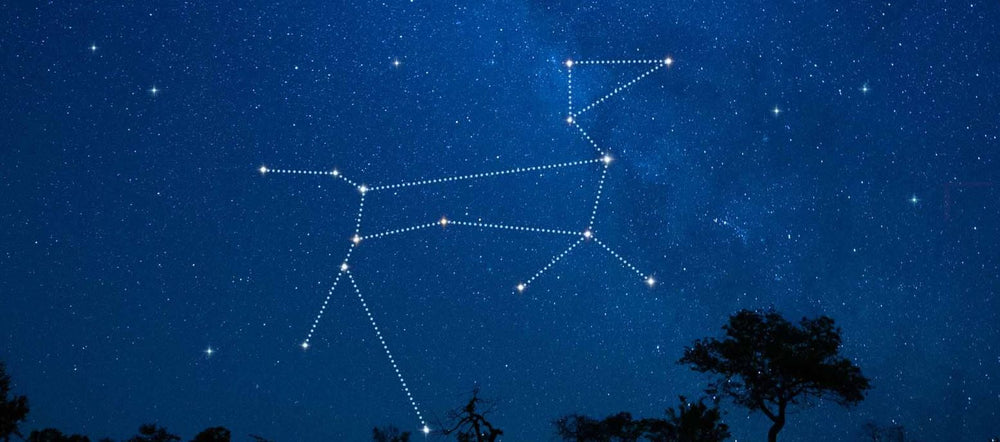Canis Major Constellation Stars: A Guide to its Stars and Mythology
Canis Major is a prominent constellation in the southern hemisphere, known for its brightest star Sirius, also known as the Dog Star. It is one of the 48 constellations listed by Ptolemy, and has been recognized by different cultures throughout history. In this blog post, we'll take a closer look at the stars and mythology of Canis Major.
Overview of Canis Major Constellation Stars
Canis Major is the 43rd largest constellation and spans an area of 380 square degrees. It is located in the southern hemisphere and is visible from latitudes between +60° and -90°. It is best viewed in the months of January and February.
The brightest star in Canis Major is Sirius, which is also the brightest star in the entire night sky. Other notable stars in the constellation include Adhara, Wezen, and Aludra. Canis Major also contains a number of deep sky objects, including the open cluster Messier 41 and the diffuse nebula NGC 2359.

Canis Major Constellation Main Stars
The Canis Major constellation is home to several prominent stars, with Sirius being the most famous and brightest star in the night sky. Here is a detailed table of the main stars in the Canis Major constellation:
| Star Name | Bayer Designation | Apparent Magnitude | Spectral Type | Distance (Light-years) | Comments |
|---|---|---|---|---|---|
| Sirius | Alpha Canis Major | -1.46 | A1V | 8.6 | Also known as the "Dog Star." |
| Adhara | Epsilon CMa | 1.50 | B2II | 430 | Second brightest in the constellation. |
| Wezen | Delta CMa | 1.83 | F8Ib | 1,590 | A supergiant star. |
| Aludra | Eta CMa | 2.45 | B5Iab | 3,120 | A luminous blue supergiant star. |
| Muliphein | Gamma CMa | 4.11 | B8III | 398 | A binary star system. |
| Furud | Zeta CMa | 3.02 | B1III | 1,150 | Also known as Phurud. |
| Omicron-1 CMa | Omicron-1 CMa | 3.04 | B9III | 364 | Part of a multiple star system. |
| Omicron-2 CMa | Omicron-2 CMa | 3.95 | B3V | 349 | Companion star to Omicron-1 CMa. |
| Xi-1 Canis Majoris | Xi-1 CMa | 4.33 | B2III | 1,290 | Part of a binary star system. |
| Xi-2 Canis Majoris | Xi-2 CMa | 4.98 | B8V | 1,090 | Companion star to Xi-1 CMa. |
Please note that the apparent magnitudes listed in the table are a measure of the stars' brightness as observed from Earth, with lower numbers indicating brighter stars. The spectral type provides information about the stars' composition and temperature, and the distances are approximate values indicating how far these stars are from our solar system.
Canis Major is primarily known for Sirius, which is not only the brightest star in the constellation but also the brightest star in the entire night sky. The other stars in the constellation are also noteworthy for their size, luminosity, and spectral characteristics
Mythology of Canis Major
Canis Major is associated with the mythology of different cultures throughout history. In Greek mythology, Canis Major represents the hound of Orion, a legendary hunter. According to the myth, Orion was so proud of his hunting skills that he claimed he could kill any animal on earth. This boast angered the goddess Gaia, who sent a scorpion to kill him. To honor his loyal hunting companion, Zeus placed the hound in the sky as a constellation.
In ancient Egyptian mythology, Sirius (the Dog Star) was associated with the goddess Isis. The rising of Sirius in the sky (known as the heliacal rising) was a significant event for the Egyptians, as it marked the beginning of the Nile flood season and the start of their calendar year.
In Chinese mythology, Sirius is known as the Heavenly Wolf and is associated with the star deity Nanjixian. It is also mentioned in the ancient Chinese classic "Book of Songs" as a symbol of loyalty and companionship.

How to Find Canis Major in the Sky
Canis Major is a relatively easy constellation to locate in the night sky, as it contains the bright star Sirius. To find Sirius, look towards the southeast horizon in the evening hours. Sirius will be the brightest star visible, shining with a blue-white color. Canis Major can be found to the lower left of Sirius, resembling the shape of a dog.
Binoculars or a small telescope can enhance the view of Canis Major's stars and deep sky objects, particularly the open cluster Messier 41.
Conclusion
Canis Major is a fascinating constellation with a rich mythology and notable stars. Its association with the hound of Orion in Greek mythology and its significance in Egyptian and Chinese culture make it a subject of interest for astronomers and enthusiasts alike. By using the guidance provided in this post, you can easily find and appreciate Canis Major in the night sky.
More Constellations:
- Orion Constellation
- Little Dipper Constellation
- Sagittarius Constellation
- Cassiopeia Constellation
- Gemini Constellation
- Lyra Constellation
- Aries Constellation
- Scorpius Constellation
- Aquarius Constellation
- Cygnus Constellation
- Virgo Constellation
- The Big Dipper Constellation
- Leo The Lion Constellation
- Taurus Constellation
- Pegasus Constellation
- Cancer Constellation
- Hercules Constellation
- Perseus Constellation
- Cepheus Constellation
- Pisces Constellation
- Andromeda Constellation

